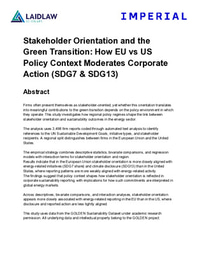Mechanisms of DNA Double-Stranded Break Repair
Abstract: Our DNA is vulnerable to damage due to both environmental and internal factors. One such form of damage is the double-stranded break (DSB), which can lead to mutations, the expression of recessive genes, and even result in cell death or carcinogenesis. One protein that has been found to play a role in DSB repair is CtIP. Previous studies have shown that organisms with two copies of the non-functional CtIP allele are less likely to repair the break sit using single-stranded annealing (SSA). The purpose of this project is to determine how the break sites are repaired in CtIP mutants, specifically looking at whether they are repaired by non-homologous end joining (NHEJ) or deletions at the break site. To investigate this question, under the guidance of my PI, I will be crossing flies of various genotypes and eventually scoring them and sending them off for DNA sequencing. Through the sequencing results, we will be able to determine what mechanism of repair is most pervasive amongst CtIP mutants.
Research Objectives & Questions: The primary objective of this project is to understand how DSBs are repaired in CtIP mutants. The secondary objectives are for me to become familiar with the literature in this field and learn classical genetic skills such as fly husbandry, PCR, gel electrophoresis, sequencing, and data analysis.
Background: Previous studies have shown that organisms with two copies of the non-functional CtIP allele are less likely to repair the break sites using single-stranded annealing (SSA). Thus the purpose of this project is to understand how the break sites are repaired in aborted SSA events
Methodology: The methods that will be used are skills in classical genetics that my PI has been guiding me through.
Potential Impact: Double-stranded breaks have far and wide implications for human disease. Namely, cancer is one disease that can be caused by such breaks that are left unrepaired, or insufficiently repaired. For example, BRCA1 is a protein that is involved in DSB break repair. In individuals with BRCA1 mutants, the protein is non-functional and is unable to repair DSBs allowing for these cells to potentially proliferate uncontrollably.
Resources & Support Needed: I do not think I need additional resources as of now, but will make sure to reach out if anything changes!




![[Research Report] 3D FRESH bioprinting in regenerative medicine: a review of recent advancements and clinical applications](https://images.zapnito.com/cdn-cgi/image/metadata=copyright,format=auto,quality=95,width=256,height=256,fit=scale-down/https://images.zapnito.com/users/879527/documents/301181/0545428e-237b-4e9c-91f0-4e08dc992479-med.jpg)
Please sign in
If you are a registered user on Laidlaw Scholars Network, please sign in